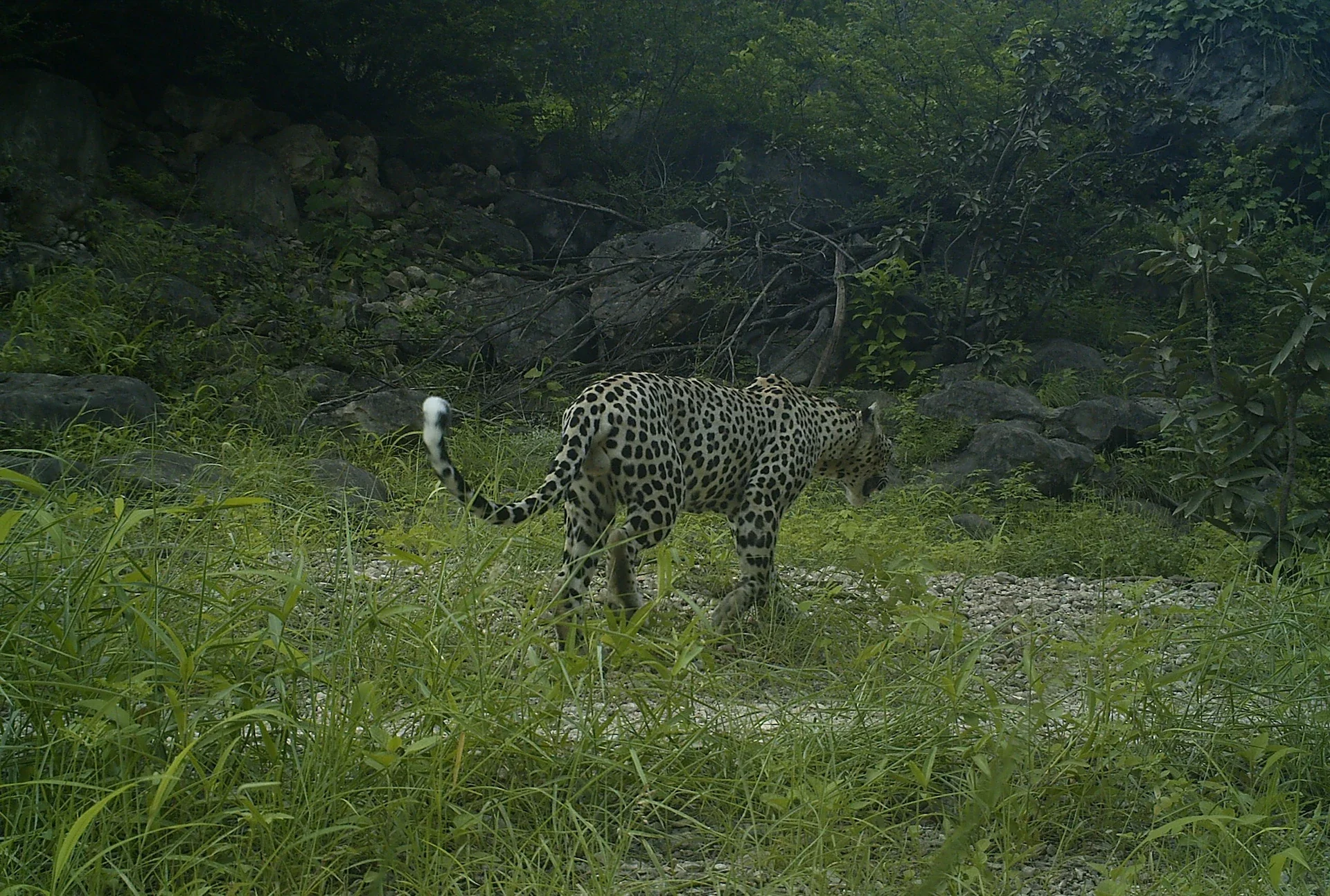Can genetic rescue help save Arabia's last big cat?
Arabian leopard Panthera pardus nimr photographed on a camera trap during the khareef in Dhofar.
A Lifeline for Arabia's Last Big Cat
The Arabian Peninsula, a land of ancient wonders, is also home to a critically endangered treasure: the Arabian leopard. This magnificent big cat, the last of its kind in the region, teeters on the brink of extinction. With a heartbreakingly small wild population of only around 51 individuals, primarily clinging to survival in Oman, their future hangs by a thread. But our recent research offers a powerful beacon of hope: genetic rescue.
Imagine a family tree that's too small, where everyone is closely related. That's essentially what's happening with the wild Arabian leopards. Their tiny population has led to alarmingly low genetic diversity. Think of genetic diversity as a species' toolbox for survival; the more tools (genes) they have, the better equipped they are to face challenges like disease or environmental changes. Without it, they're vulnerable.
This lack of diversity has a sinister consequence: inbreeding. When closely related individuals breed, harmful genetic mutations, often hidden, become more common. We call this phenomenon "genetic load." It's like a ticking time bomb, weakening the population, reducing their ability to reproduce successfully, and making them more susceptible to illnesses. For the Arabian leopard, this genetic bottleneck is a primary driver pushing them towards oblivion.
But our dedicated team, spanning institutions and countries, wasn't content to simply observe their decline. We embarked on a quest to find a solution, and our gaze turned to captive Arabian leopard populations. Could these animals, often seen as separate from their wild kin, hold the key to their survival?
What we discovered was truly exciting. Through meticulous conservation genetic analysis, utilizing cutting-edge techniques to extract DNA from elusive leopard scat and combining it with crucial data from camera traps in the wild, we made a vital finding. Captive Arabian leopards, particularly those with ancestry tracing back to Yemen, possess a significantly higher degree of genetic diversity than their struggling wild relatives. This captive gene pool isn't just a collection of animals; it's a living library of genetic variation, a precious resource that could turn the tide for the wild population.
The concept is elegant in its simplicity: what if we could strategically introduce these genetically diverse captive-bred leopards into the wild population? This is the essence of genetic rescue. To test this theory, we didn't just hope; we simulated. Using sophisticated computer models, we ran scenarios, essentially playing out the future to see the potential impact of such introductions.
The results were compelling. Our simulations demonstrated that genetic rescue has the power to dramatically alleviate the devastating effects of inbreeding and reduce the harmful genetic load. By carefully introducing new genetic material, we can effectively "dilute" the inbreeding and provide the wild population with the genetic tools they desperately need to thrive. This isn't just about adding more bodies; it's about improving the fundamental genetic health of the population, enhancing their resilience, and ultimately, boosting their long-term viability.
While the promise of genetic rescue is immense, our research also highlights the critical importance of a nuanced approach. This isn't a simple free-for-all. We must meticulously assess and plan each step to ensure that we don't inadvertently introduce new, undesirable mutations from captive populations into the wild. It requires careful genetic screening, understanding the specific lineages, and a deep knowledge of the individual leopards involved.
This pioneering study isn't just a scientific paper; it's a roadmap for survival for the Arabian leopard. It offers a tangible and scientifically supported strategy to pull this magnificent big cat back from the brink. The journey ahead will be challenging, requiring collaboration, dedication, and a commitment to applying these vital genetic insights. But armed with this knowledge, we are more hopeful than ever that Arabia's last big cat will roar on for generations to come.
Read more: https://doi.org/10.1111/eva.13701

